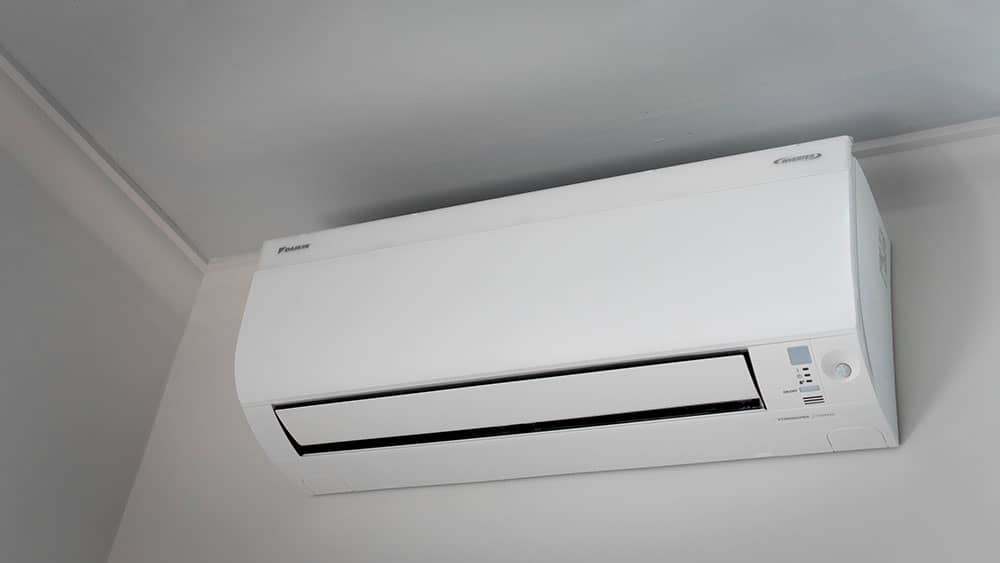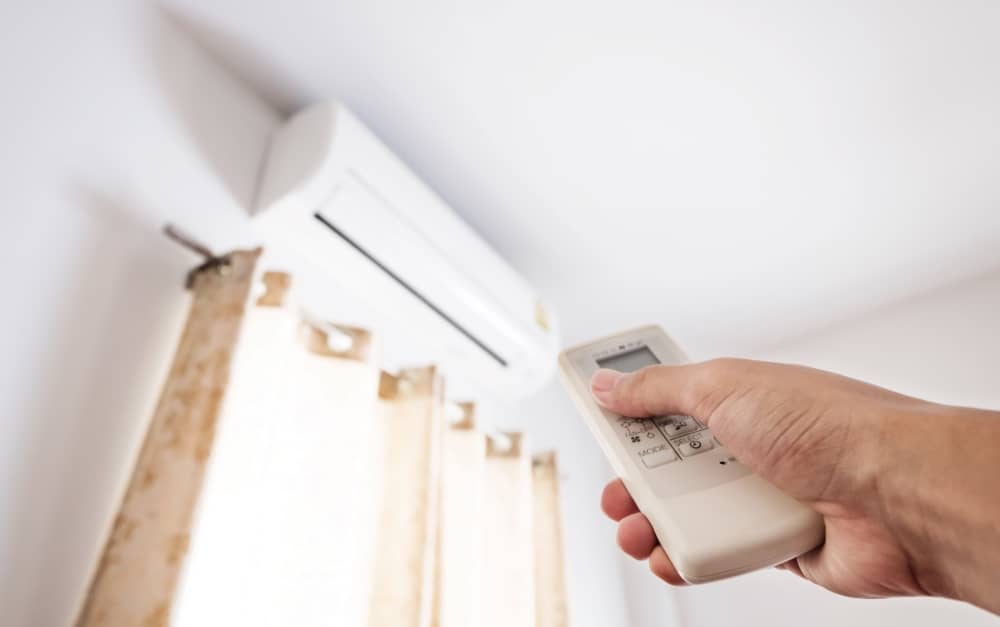When buying a split system air conditioner, you should not just focus on the cost and brand. There are many other important factors to consider, including the size. When talking about the size, it does not pertain to the actual size of the unit itself. Instead, it is regarding the cooling capacity of the appliance, which is measured in wattage, specifically kilowatts (kW). This cooling capacity concerns the size of the area where the unit will be used.
Therefore, whether you select a window-type, central air, or split-type, you can take advantage of the efficiency of the unit. This guide is about how to determine the capacity of the air conditioner with regards to the room size.
Why Calculating the Right Size of Air Conditioner is Important
It can be tempting to buy an AC that meets just your budget and fits your space. Some homeowners even go for the largest capacity they can afford. However, just as with considering ghostwriting preise when you’re contemplating hiring someone for academic work, it’s crucial to assess not just the cost but also the suitability and efficiency for your specific needs. The correct approach is to purchase according to the size of the room. Air conditioning units that come with large cooling capacities will undoubtedly use more energy. If you do not need a lot, you end up wasting this energy, and you pay higher bills as well.
Similarly, when you buy a small unit, it will not provide the cooling benefits you need for your room. So, how do you know the best size of the air conditioner?
No matter what type of AC you have, you should always look at the wattage. This statement is true if you want to buy a split-type aircon for your space. Generally, you will have to use about 0.142 kilowatts for every square metre of your room.
Let us have some examples:
- If you have a small room, which is about 18 square metres, your AC wattage should be around 2.5kW to provide you with a cool and comfortable space.
- Meanwhile, if the room is about 60 square metres, your split-type air conditioner should deliver about 8.5kW of power.
Too low wattage can lead to inefficient operations since you cannot lower the temperature properly.
Tips for Measuring the Space to be Cooled
The most vital piece of information that you should have ready is the exact size of your room. Yes, it will involve a little bit of mathematical equation. But no, you do not have to be a mathematician to know the answer.
Here is how you do it:
- Get the measurements (in metres) of the room, specifically its width and length.
- The numbers you have should be multiplied with each other. The result is in square metres.
- You can also consider adding the ceiling height, especially if it is particularly high. However, for simplicity’s sake, we will just focus on the floor space.
It is typically easy to get the measurements of a room if it is shaped the traditional way – a square. However, if you have a triangle-shaped room or other unusual shapes, it can become a little bit tricky.
Nevertheless, here are some formulas to bear in mind:
- For triangle-shaped rooms, use the formula Length x Width x ½
- For odd-shaped spaces with several corners, you need to get all the measurements from one point to another first. Then, you should be able to break the room into smaller measurements to calculate the square metre of the pieces. The same rule applies where you multiply the length by the width. Finally, you will add all the numbers for each piece to get the total square metre measurement.
Thankfully, most rooms in Australia are shaped square so that you can calculate the dimensions easily.
All types of air conditioners, including split-type, are grouped based on their output. As a starting point, you will require one kW cooling capacity up to 1.5kW for every 10 square metres of space.
Each home is different, though. Therefore, your cooling requirements may differ from your neighbour’s. One huge factor to consider is your home’s insulation. If it is well-insulated, you will usually only need the minimum capacity mentioned. However, if your house is uninsulated or poorly insulated and you are located in Perth or any hotter areas, you have to go with a more powerful air conditioner. This way, you can truly enjoy efficient cooling.
What Size is Perfect for Your Home?
After you have measured the space and you have the measurement in square metres, you can decide how much capacity to go with. Below, you will find a rough guide on how to determine the correct size of the air conditioner to use for your home.
- What size of a split system to use for 50 square metresMany homes in Perth and other areas in Western Australia measure 50 square metres. Usually, they have a large lounge and designed with open flooring. Small shops and offices also are typically in the 45 to 50-square metre range. In this case, the best capacity is seven to eight kW.
- Smaller rooms measuring 10 square metresFor bedrooms, small kitchens, and lounges that are 10 square metres, a 2.6kW air conditioning unit will suit them. Small offices of the same size up to 20 square metres can benefit from this AC unit capacity as well.
- Rooms approximately 20 to 30 square metresFor rooms that are a bit larger or come with en-suites or a study, the best range is 3.5kW. These areas also include small lounges and mid-sized kitchens. If you have a small room and it has a high ceiling, you may want to choose this cooling capacity of the aircon unit.
- Rooms measuring 30 to 45 square metresIf you have large bedrooms with en-suites, a mid-size lounge, or an expansive kitchen, it is recommended that you go with a five to six-kilowatt appliance. This capacity is also beneficial for those with medium-sized rooms, but the ceilings are higher than normal.
- Rooms with 65 square metres of spaceFor large spaces, sticking to a seven to eight-kilowatt range can make living more comfortable.
Please note that these numbers are simply guidelines. Some aspects of your property, including how your room was built or its layout, can affect the required wattage.
Let’s Make Things Easier. Use Our Aircon Size Calculator
Still can’t get the right size? Or perhaps you just want to get the sizing without doing any calculations yourself. Who has time for that anyway? We have the solution for you! Head to https://www.acsisair.com.au/air-con-size-calculator/ the quickest, easiest, and most convenient way to get the suitable aircon size for your bedroom or living room. Try it today!
Here’s what to expect from our calculator:
- Get your aircon size result in kW and floor area in square metres in real-time
- Choose your room type (bedroom or living room)
- Room measurements in metres (Length and Height)
- Ceiling height in metres
- Sunlight exposure (Afternoon and Evening as your choices)
- Presence of roof insulation
As aircon specialists in Perth, we strive to give you the best computation possible. However, your results may still vary depending on certain factors, such as heat loads, manufacturer ratings, your exact location, and environmental conditions.
You may be wondering why we require information, including your room measurements and room type. These details help find out the best aircon sizing for your circumstances. Similarly, when dealing with plumbing issues, it’s crucial to know the specifics of your situation. That’s where services like Rohrreinigung Berlin come into play, offering tailored solutions based on the unique requirements of your home or business. Before using the calculator, we recommend that you double-check your figures, although you can always re-enter the information we require at any time.
Follow these steps to get accurate or near-accurate results:
- Determine which room you plan to install the split type aircon, whether it’s your bedroom or living room. This may be a trivial detail, but it does play a role in the size the space requires.
- Calculate the floor area as given above. Or measure the length and width and multiply the sum to get the figure in square metres. So, if your room is 5 m x 6 m, it is 30 square metres. That’s the number you will enter in our calculator.
- Get your ceiling height. In typical standards, ceilings are about 2.4 to 2.7 metres. However, some homes may have up to three metres or even higher. You need to provide an accurate measurement since the kilowatts the space requires will differ depending on the ceiling height, along with the room measurements.
- What about sunlight exposure? If your home receives a lot of heat, choose Afternoon, the time of day with heavy sun exposure. Meanwhile, if your home has plenty of shade or is subjected to less sun exposure, please select Evening. In general, choosing the Evening option means that your home is cooler, so you will see that our kW recommendation will go lower than if you choose the Afternoon option.
- Is your house insulated? Older houses often have uninsulated roofs. If your home is insulated, temperature regulation is so much easier. That means cool air stays in your home in summer and warm air helps keep your space heated in the winter. Air conditioning works well with proper insulation, which maintains the temperature and reduces the workload of the appliance. This results in lower electricity bills and a longer life for your aircon. The relevance of roof insulation in the calculator is that the size of the aircon increases if your home is not insulated.
The floor area refers to the space where the split system can cool or heat without walls. If you are calculating for your living room, for example, and you would like the aircon to reach the kitchen, but there are walls dividing these two spaces, you must increase the system’s capacity. Another option is to choose a multi-split unit since split systems are not too effective for cooling walled areas.
Why Choose a Split System
As you may know, there are different types of aircon available, including ducted, ductless, portable, window-type, and split. Out of these options, split systems are the most suitable type for many Perth homes. If you have not decided on whether or not a split system is for your home, take a look at the following reasons to help you out in making that final choice:
- Size: If you have one to two rooms to heat or cool, you do not need a huge system. A split-type aircon is your most cost-efficient option, especially if your goal is to keep operations cheap.
- Budget: Not only are split systems affordable to run, but they are also cheaper to buy compared to ducted and most other air conditioners of the same size and capacity.
- Easy Installation: A split system air conditioner can be installed in just a day. It’s easier and does not require special equipment or additional parts to have it up and running in your home.
- Aesthetics: One issue that some people have with split systems is that they are wall-mounted. However, with the availability of various styles and designs, the appliance can easily fit with the existing fixtures in the space.
- Control: You can control the aircon without a hassle by using innovative technology connected to your phone or simply pressing the remote.
- Peace and Quiet: Sleep better with a noiseless cooler. Split systems are relatively quieter than ducted systems.
- Flexibility: Scalable with multiple control options, split-type air conditioners, specifically multi-split ones, let you choose the suitable indoor unit for every room in the house. For example, you can have a larger capacity unit for your living space and a smaller, quieter unit for your bedroom.
If your home is not compatible with a ducted system, the best alternative is a split system. Ducted systems require internal roof space and are best for bigger rooms. Meanwhile, if you already have a window-type or portable unit, you may want to switch to a better system. We highly recommend a split type aircon. Many brands offer this type of appliance, including Daikin, Mitsubishi, and Panasonic.
As always, you should speak to an air conditioning specialist if you are looking to install a system in your home. ACSIS Airconditioning Warehouse is here to help. Get in touch today.



